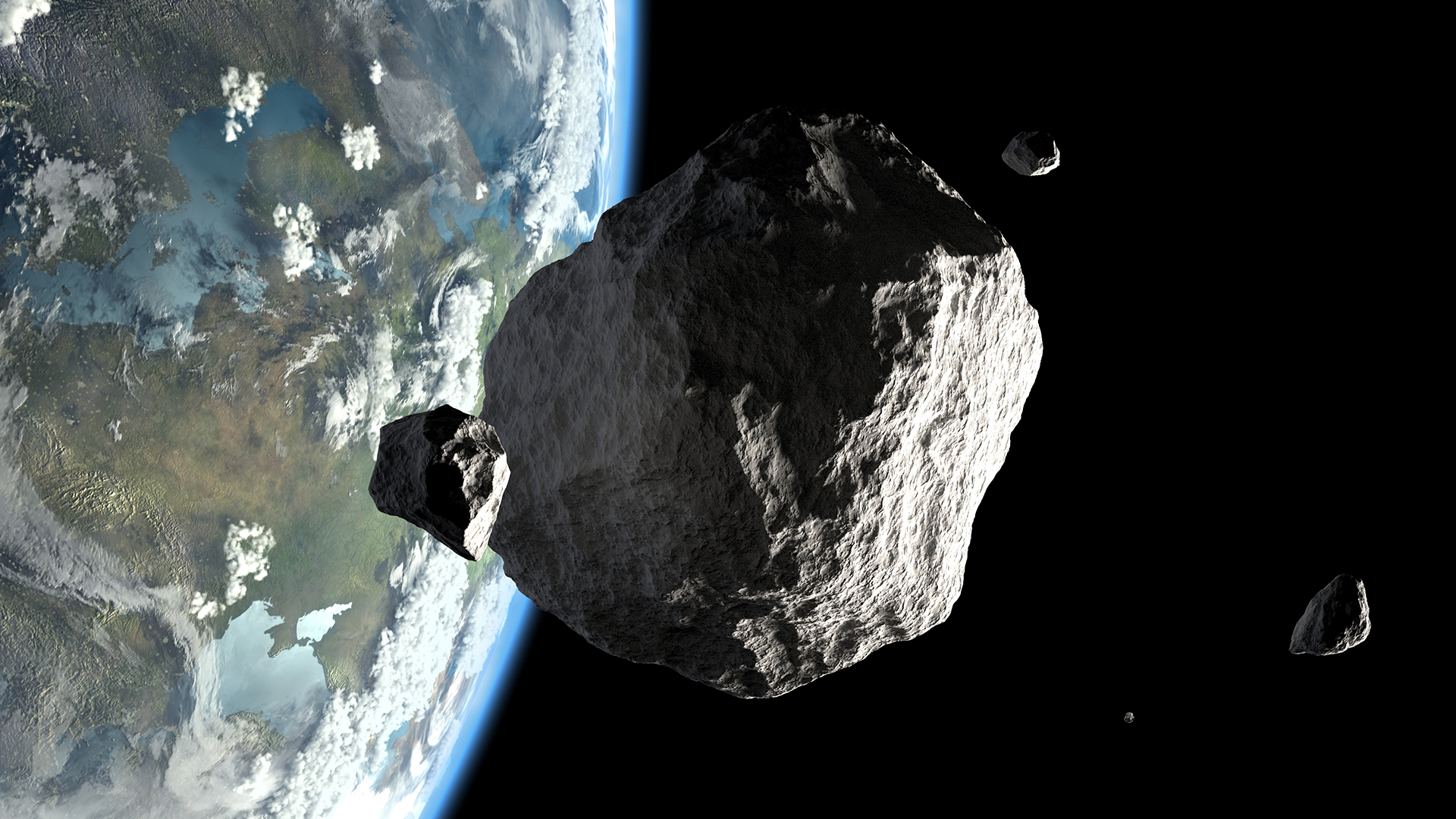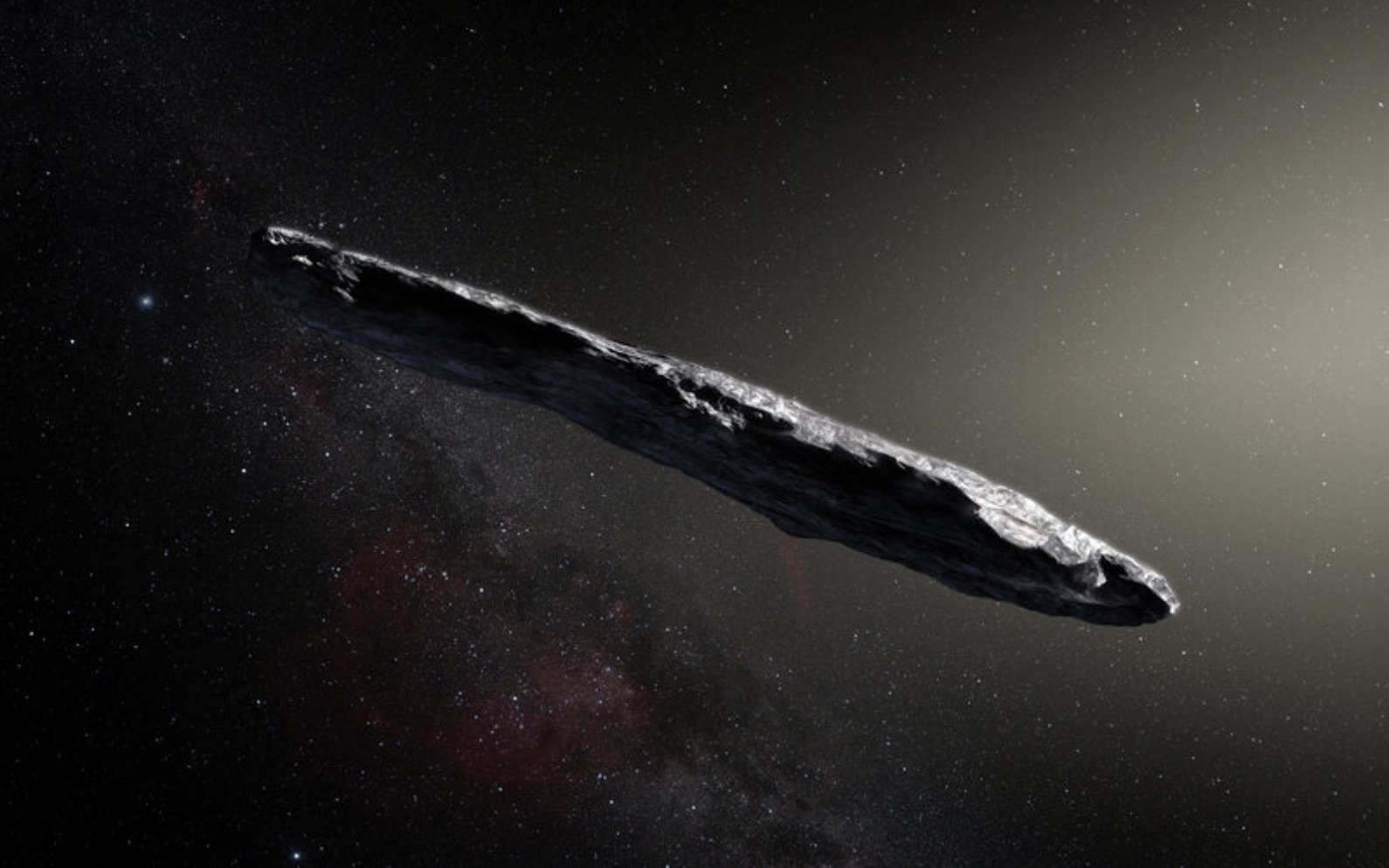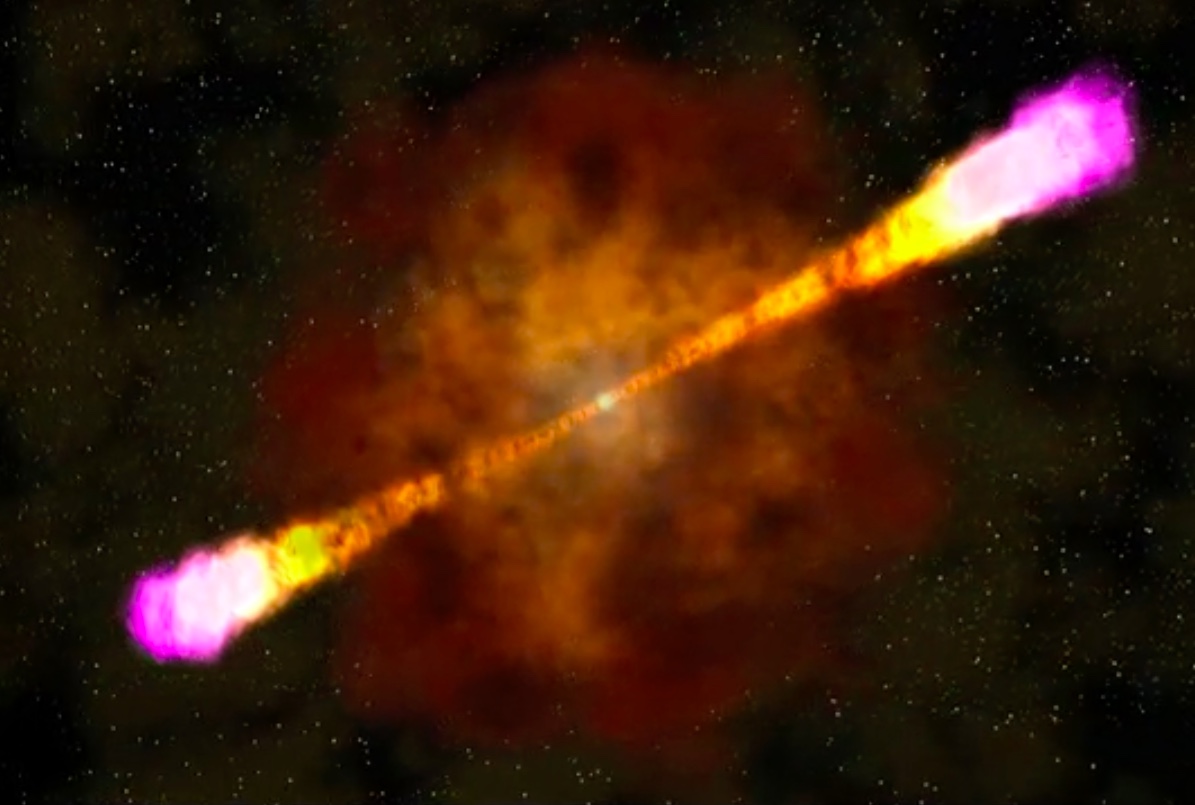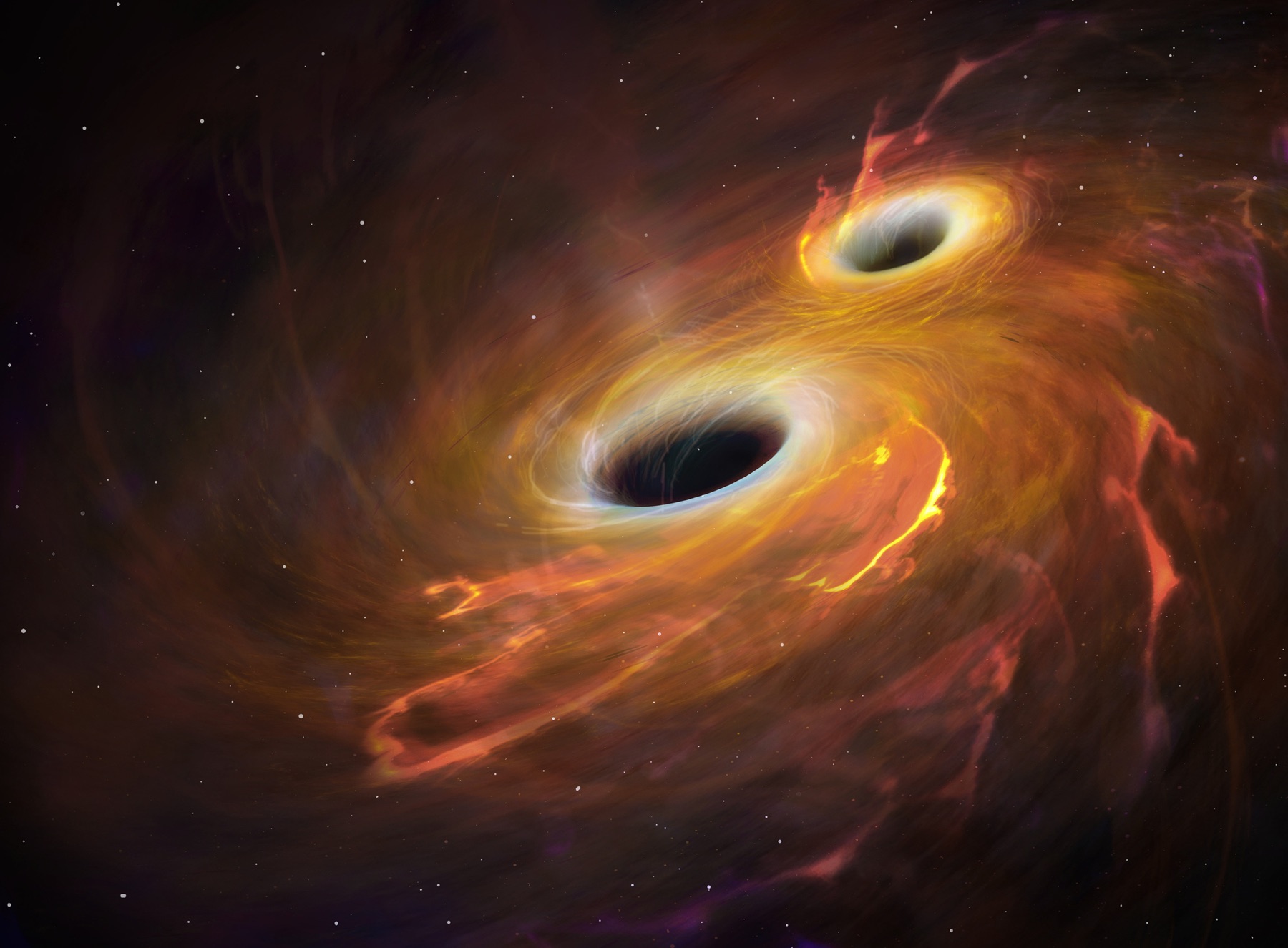10 Things That Blasted Through Space in 2019
… and sometimes crashed to Earth.
Zooming through space
Big rocks, small rocks, dust and astronauts — these are just a few things that hurtled through the inky darkness of space over the past year. Sometimes, objects came crashing to Earth, but we couldn't always tell exactly what they were. From pyramid-size asteroids to black hole-buddies, here are 10 things that blasted through space in 2019.
Astronaut best friends

On Sept. 25, NASA astronaut Jessica Meir climbed aboard a spacecraft docked at the Baikonur Cosmodrome in Kazakhstan and blasted off toward the International Space Station. With picture-perfect timing, Meir's best friend, astronaut Christina Koch, snapped a photo of her ascent during the second stage of the rocket launch. "What it looks like from @Space_Station when your best friend achieves her lifelong dream to go to space," Koch wrote in a tweet.
An asteroid as wide as a skyscraper

In mid-September, a mammoth space rock hurtled past Earth — but thankfully, it was about 3 million miles (5 million kilometers) away when it did. Asteroid 2000 QW7 measures between 1,000 and 2,000 feet (300 to 600 meters) wide and glided by our planet moving at about 14,361 mph (23,100 km/h). Although the asteroid posed no danger on this time around, NASA has kept track of the rock since 2000 and shall continue to track its future travels. The asteroid will next drift near Earth on Oct. 19, 2038.
Triple threat (but not really)

Three asteroids flew past Earth on Sept. 9 of this year, and initially, NASA scientists predicted that one of the space rocks might cut its pass pretty close. By "pretty close," they meant that the asteroid might come within 310,000 miles (500,000 km of Earth, well outside even the moon's orbit. The near-Earth objects had fallen under the gravitational influence of nearby planets and all veered toward our home planet. The three asteroids all passed the planet within a 12-hour time window, and with plenty of room to spare.
A comet from another star system?

In August, a Ukrainian skywatcher named Gennady Borisov spotted a comet streaking across the sky. Turns out, the ball of ice and dust may have been visiting from beyond our solar system. After numerous sightings, scientists named the comet C/2019 Q4 (Borisov) and tracked its course over time. The comet's trajectory appeared to follow a hyperbola shape, unlike most comets seen in our solar system, which race around the sun in elliptical orbits. Comet C/2019 Q4 (Borisov) may be the second interstellar object to pass through our cosmic neighborhood, apart from 'Oumuamua, which was discovered in October 2017.
High-energy light from a dying star

In January, astronomers caught sight of a dying star's final moments as the celestial body let loose a dramatic burst of ultrahigh-energy light, known as a gamma-ray burst (GRB). The GRB took place about 7.5 billion light-years away from the Earth, and carried light particles with energies measuring trillions of electronvolts that are trillions of times more powerful than the photons from our own sun. While GRBs aren't a rare occurrence, astronomers often struggle to capture measurements of the bursts because the event itself may last only a fraction of a second. With the help of telescopes like MAGIC and the High Energy Stereoscopic System (H.E.S.S.), scientists expect to catch more in the future.
Massive asteroid wrecked by dwarf star

A cloud of debris circling a star serves as the only remaining evidence of a massive asteroid's cataclysmic destruction. In 2018, a white dwarf star in our galaxy suddenly began to shine brighter and brighter, and its luminescence continues to build even today. Now, scientists finally think they know why. They theorize that the star entrapped an enormous asteroid in its gravitational field and tore the space rock to bits, creating a cloud of metallic bits. Light from the star heated the asteroid bits until they emitted their own light, an effect that made the star itself appear brighter through Earth's telescopes.
Sign up for the Live Science daily newsletter now
Get the world’s most fascinating discoveries delivered straight to your inbox.
Pyramid-size asteroid

A near-Earth object called 2019 SX5 boasts similar dimensions as the Great Pyramid of Giza and recently flew right past our planet. The asteroid whizzed by Earth at about 49,000 mph (78,900 km/h), but luckily, its trajectory placed the massive rock about 4 million miles (6 million km) away. According to current estimates, enormous asteroids fly by Earth every few days — in fact, a different pyramid-size rock glided past the planet in July.
Unicorn meteor shower

Hundreds of meteors raced across the heavens in November in a rare event known as a "unicorn" meteor shower. The alpha Monocerotid meteor shower takes place every year but usually includes only a handful of meteors. This year, scientists predicted that onlookers might see up to 1,000 meteors light up the sky near the unicorn constellation, Monoceros, hence the whimsical name of the shower. The meteors originally formed from the dust trail of a comet that occasionally veers extra close to Earth's orbit. The closer the comet, the more meteors tend to form.
Colliding black holes

Three monstrous black holes about 1 billion light-years from Earth are steadily scooching toward each other, and someday, they will probably collide. The supermassive black holes lie at the center of three merging galaxies, sucking up dust and gas from their surroundings. Currently, the distance from one black hole to the next ranges from 10,000 light-years to 30,000 light-years, but scientists predict that the black holes will eventually merge just like their parent galaxies.
Unidentified fireballs over Chile and China

Mysterious flaming objects rained from the sky in Chile in September, and officials weren't sure what the UFOs were or where they came from. Based on geological surveys of sites where the objects crashed, experts determined the fireballs probably weren't meteorites but may have been falling space debris. A month later, something thought to be a meteor burned over northeast China, lighting up the midnight sky until it almost seemed like daytime. The fireball cast dark shadows on the ground as it made its way across the heavens, according to local news reports.
- Stephen Hawking's Most Far-Out Ideas About Black Holes
- UFO Watch: 8 Times the Government Looked for Flying Saucers
- The 10 Weirdest Science Studies of 2019
Originally published on Live Science.

Nicoletta Lanese is the health channel editor at Live Science and was previously a news editor and staff writer at the site. She holds a graduate certificate in science communication from UC Santa Cruz and degrees in neuroscience and dance from the University of Florida. Her work has appeared in The Scientist, Science News, the Mercury News, Mongabay and Stanford Medicine Magazine, among other outlets. Based in NYC, she also remains heavily involved in dance and performs in local choreographers' work.









